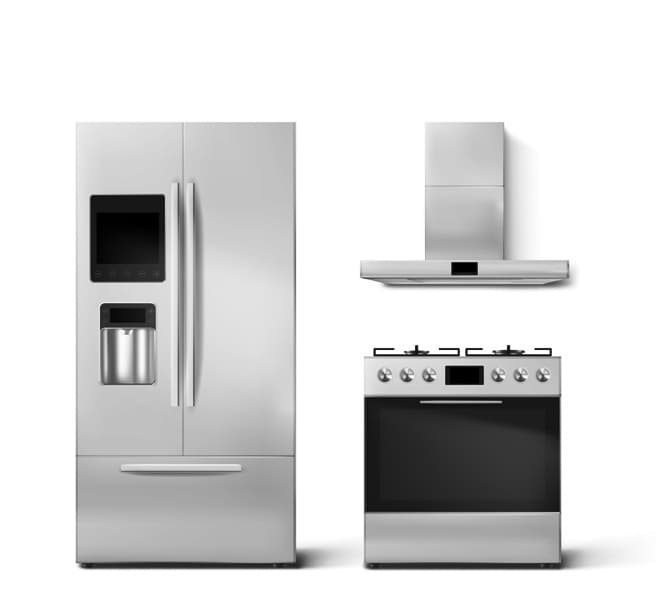
In the fast-paced world of today, our living spaces are ever-evolving, demanding flexibility and adaptability. Whether you’re relocating to a new home, renovating your existing space, or simply looking to refresh your kitchen setup, the task of moving and removing appliances such as fridges and stoves can be both exciting and challenging.
The purchase of new cooking equipment can be an exciting adventure for anyone who spends much time in their kitchen, yet disposing of old items to make room for new ones can be more complex than simply throwing them out of the bin. This is particularly true without access to a vehicle; moving a refrigerator and stove without assistance may prove challenging without proper tools. Luckily, there are options available to those wanting to safely dispose of their old kitchen appliances. Let’s dive in and learn how to move a refrigerator.
Take Everything Out

While organizing your fridge, be sure to throw away anything expired or spoiled, as well as any leftovers you know you will never eat again. Doing this will save space and money over time while keeping it looking and smelling its best!
Take apart your refrigerator into its parts (drawers and shelves), then wash in the sink using food-grade cleaners that won’t get in contact with food, such as a vinegar-water mixture. A vinegar solution works particularly well at breaking down grease and grime while being far less harsh than chemical solutions that could come into contact with your food supply.

If your refrigerator contains deli or egg bins, take the time to empty them and rinse them out with soapy water before placing them back into your fridge. Also, remove and wash any drawers or crisper bins that can be taken out and washed; doing this will make moving less likely while also decreasing potential damages in the process.
Freon should only ever be removed from a fridge by professionals or those who have received appropriate training in doing so safely. As it is a toxic compound found in most household appliances and can be extremely hazardous without professional training, all electronics should be disconnected before attempting removal; leakage could damage them as well as the fridge itself. You can click the link for more information.
Your fridge’s manual may suggest taking steps to prevent potential damage to its doors or hinges during a move; alternatively, secure them closed with bungee cords or rope and store any loose screws safely in a zip-lock bag.

Now the question is: how to move a refrigerator? Before moving your refrigerator, remove any obstacles, such as boxes, rugs, or furniture, which might get in their way and set them on a soft surface. This will make moving through doorways and hallways safer while giving you a chance to test if the fridge can fit through any doors at your new residence.
Secure the Doors

Refrigerators differ from most appliances in that they cannot simply be unplugged and moved. As part of your clean-out, it’s also advisable to double-check that any door latches are secure. If your refrigerator doesn’t feature a lock, consider calling in a professional or purchasing one of the cheaper cable locks available. These wrap-around handles prevent movement, much like key locks do, yet are easier and faster to install than traditional padlocks while remaining just as strong and durable.
If you plan on moving your refrigerator through a rear door, securing its doors is essential to protecting them from being lost or damaged in transit. Furthermore, any adjustable shelves should be taken apart and stored safely before being secured within boxes or containers for moving days.

Before moving, have a helper tilt the refrigerator slightly while you slip an appliance dolly underneath it. Next, carefully move it onto the dolly without snagging anything else along its path to its destination. Most importantly, have one person standing on either side to guide its route until it reaches your truck.
Moving a refrigerator with a proper plan will save time, energy, and headaches during its actual relocation. To make sure you can do this quickly and smoothly, before beginning, it’s important to know its dimensions as well as your home’s doorways, so you know if you have to remove its doors or take another path.
Move It

No matter if you are moving into a new home or renovating an existing kitchen, properly unloading a refrigerator should always be top of mind. At 150 to 350 pounds in weight, wrongfully unloading this weighty appliance could result in bodily injury or broken floors if done incorrectly; however, with proper planning, this task can be completed safely and quickly.
First, rent a large, sturdy dolly from either a hardware store or a rental center. Renting is more economical and safer than purchasing or borrowing moving straps, plus it gives more control than simply pushing an appliance around on stairs or sloped ground.
Before beginning to move a refrigerator, check that it can pass through doorways and stairwells without issue. Take measurements of its height, width, and depth, as well as the distance from the kitchen to the front of the house and any obstacles along your path. Once your route is clear, cover any affected flooring with cardboard or hardboard to protect it from scratches.

As soon as you’re ready to begin the move, have one person lift and move the fridge slightly while the other positions a dolly underneath it. Gradually roll your refrigerator towards your vehicle or truck; if transferring into a pickup truck bed, make sure that its lip allows easy rolling up onto its dolly without needing to lift over any edges.
If you are taking out a built-in refrigerator, be careful with its removal with a dolly. Purchase or rent furniture sliders that slide underneath its feet, but be mindful not to allow too much backward movement, as this could cause it to tip forward and break.
How to Dispose of an Old Refrigerator Safely

If you’re upgrading to a new refrigerator, don’t simply throw the old one away; this contributes to landfill waste, which damages the ozone layer and emits greenhouse gases. Instead, recycle it!
Recycling regulations can vary, but many electric utilities and environmental organizations offer appliance recycling programs; some even collect your old fridge for free and dispose of it responsibly! There are waste management facilities and transfer stations with resources for recycling fridges on-site if they can transport them themselves. You can click here for more information. It is important to make sure your old appliances are properly disposed of.
If your old refrigerator still works, consider donating it to a charity or shelter that could use it. Just be sure to test it first, as it might not perform as well as it did initially!
Contact a scrap metal dealer to see if they will buy your old fridge, as they may also help remove Freon for you, an integral step when preparing to donate or recycle your refrigerator.
How to Dispose of a Stove Safely

One option for selling an old stove is through online trading networks. There are several sites dedicated to online trading networks and many offer categories including kitchen appliances.
When selecting a site to advertise your stove on, they should consider the most efficient ways of transporting and delivering it, including any weight restrictions for delivery, which can be especially important if limited transport options exist.
You can dispose of the stove or, as another option, give the stove to someone in need; this may be more ideal than simply throwing it away, as many municipalities don’t allow large appliances for curbside trash pickup, and improper disposal could damage the environment.
Before handing over, be sure to disconnect all power sources when moving a refrigerator or stove. This includes disconnecting the surface element from electrical contacts as well as checking for signs of heavy wear on terminal sockets and wires.

Your wood-burning stove combustion chamber may become clogged with creosote over time, decreasing efficiency. Sometimes this damage can be repaired; if not, consider switching to an eco-friendly model instead.
Failing to properly dispose of a stove can produce harmful toxins that pollute air, water, and soil and potentially enter human bodies through organ damage and disease. Therefore, you must make time to recycle this appliance when disposing of it.
Assembling and disposing of a stove properly can not only protect the environment and save you money on new kitchen equipment, but it may also save you money!
Stove recycling reduces waste products that end up in landfills while limiting the release of harmful substances into the environment, both factors contributing to climate change. Furthermore, donating old appliances to charity provides another great opportunity to give back and support those in need in your community.
Both refrigerators and stoves contain elements that should be recycled. This is why it is important to move and dispose of these items properly. A professional junk removal service can also help you in moving a refrigerator and stove. Thus, this guide is your compass for navigating the world of fridge and stove moving and removal with confidence and finesse.






























